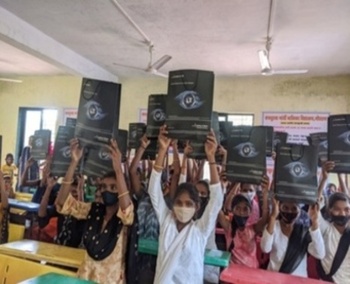Empowering Communities:
The Role of Community Participation in Solar Projects

With the tireless work by Project Chirag, an NGO for rural development in India, the power of the sun’s rays through solar power projects has reached even the farthest, darkest of places in rural India. In this blog,
let’s look at how community participation can be used to increase the efficient and effective expansion of
solar projects.
The rise of solar power in empowering communities
An intriguing fact is that India has claimed the 5th position in solar power capacity globally. This data is
provided by the Ministry of New & Renewable Energy of India. The country is in its best strategic position to
undertake the solar projects since most places receive sunlight for most of the year. Perhaps solar energy
could indeed greatly reduce India’s reliance on the non-renewable sources of power, particularly for the
people in distant areas where the main issue is with electricity outages.

Why community involvement matters in solar based projects
- Better project acceptance: When people are engaged right from the time of investing in the solar projects, they are likely to support the projects. This helps to avoid confrontation and compromise, making implementation of projects much easier.
- Capacity building and skill development: Involving communities in solar initiatives isn’t just about the projects themselves; it’s also about developing skills. Imagine training programs specifically for solar installation—these could empower local people to maintain and operate the systems.
- Shared ownership and benefits: The involvement of people in the communities leads to ownership and ownership leads to pride in the result. When the community knows the benefits such as low electricity bills, employment among the others, it becomes easier to steer a more sustainable energy regime.
- Local knowledge and expertise: People already in the community lay more emphasis on dimensions such as the local environment, culture, and more. On this basis, their impact can contribute a lot towards the enhancement of project design, implementation as well as durability.
- Environmental stewardship: When people feel connected to their physical surroundings, they tend to take on more responsibility for their actions. By including local communities in protecting natural resources, we’re not just doing something that’s good for the community; we’re fostering a nation that really cares about the environment..

How to foster community participation in solar based projects
- Community outreach and education: Think about hosting workshops, seminars, and awareness campaigns. These can help spread the word about how great solar energy is, clear up any misconceptions, and tackle concerns head-on.
- Skill development and training: Organize training sessions to teach the members of the community on how they will be required to work in relation to the project; these include installation, management, financing amongst others.
- Local procurement and employment: We should aim to use local materials and labour whenever possible. This not only creates jobs but also helps boost the local economy.
- Community-owned solar projects: The initial approach should aim at analysing ways through which different communities can undertake solar projects and gain value from them.
- Transparent communication: It is very important to keep the communications open. Setting up clear channels can help every stakeholder stay in the loop about how the project is going, decisions being made, and any impacts that might pop up.
- Inclusive decision-making: Let’s not forget about involving community reps in the decision-making process. It is crucial that their voices are heard and their worries are taken seriously.

Community Solar Projects in India: A Model for Empowerment
With an enhanced community participation in the community solar projects in India, we can shift toward the
principles of sustainable energy while advancing the rights of disadvantaged groups simultaneously. Solar
projects are not only useful to support the energy production and usage; it can actually drive social and
economic progress. It’s about giving power back to people and encouraging everyone to take responsibility
for looking after the environment.
At Project Chirag, we make it possible for the sun to change the world from a place of inequity and
disempowerment to a land of opportunity.



